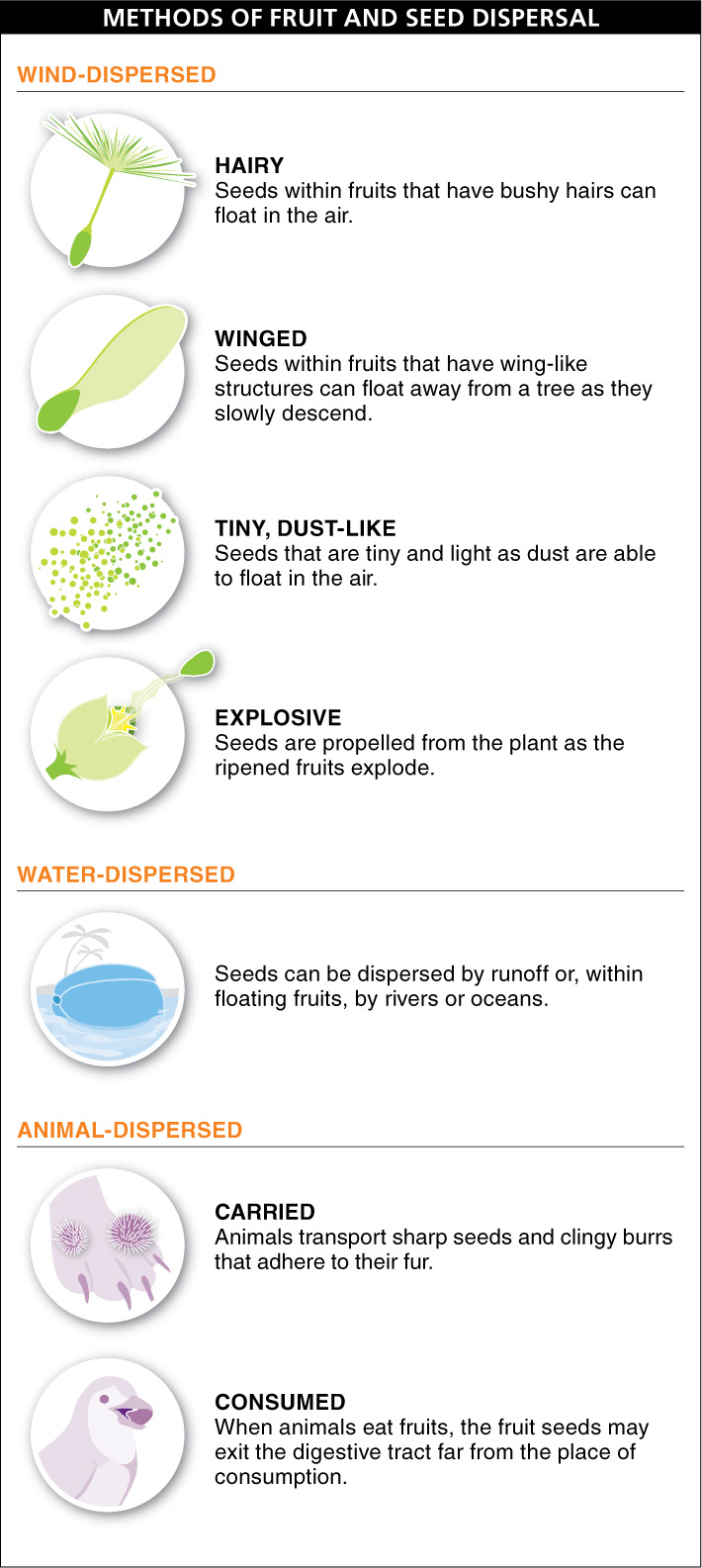18.12: Fruits are a way for plants to disperse their seeds.
Every fruit you eat used to be a flower: tangerines, peaches, raspberries, cherries, pumpkin, and squash, among others. Fruits are produced by plants to aid in dispersing the seeds that will grow into their new offspring. By encasing seeds in a juicy, nutritious structure—
746

There is a huge variety of fruits beyond those adapted for consumption by animals. And although they all serve the function of dispersing the seeds, not all require the assistance of animals. Just as with dispersal of pollen, plants can also use wind or water to transport their seeds. FIGURE 18-23 presents a small sampling of the rich variety of fruits and seeds produced by plants. As is apparent, the term “fruit” applies to a much broader range of structures than is typically associated with it. And the makeup of each fruit clearly reflects the method by which it is dispersed—
Wind-
- 1. Hairy. Bushy hairs allow the fruits of dandelions and milkweed to float in the air.
- 2. Winged. Usually released from tall trees such as elms and maples, winged fruits, and in some cases winged seeds that are expelled from fruits prior to dispersal, float away from the tree as they slowly descend.
- 3. Tiny, dust-
like. Many orchids have seeds that are as tiny and light as dust and so float in the air. - 4. Explosive. Many fruits, such as those of mistletoe, explode when ripe, propelling the seeds as far as 50 feet (about 15 m) away at speeds of 60 miles (about 100 km) per hour.
Water-
Animal-
1. Carried. Some plants produce fruits that have sharp or clingy burrs on the outside. These burrs catch on the legs or fur of animals (including humans) and are carried away until the animal grooms itself and removes the fruit, leaving the seeds to germinate and grow in the new location. Burrs were the inspiration for Velcro.
2. Consumed. Many fruits are sugar-
Q
Question 18.6
Why do fruits taste so bad before they are ripe?
747
The seed’s coating is tough enough to pass through an animal’s digestive tract without being destroyed, and the seed can germinate and begin growing wherever the animal defecates (or, in the case of birds, regurgitates).
The various animal-

TAKE-HOME MESSAGE 18.12
Seeds and fruits form following pollination and fertilization. Plants use the assistance of animals, water, or wind to disperse their fruits and seeds, depositing them at new locations where the seeds can germinate and new plants can grow.
When it comes to seed dispersal methods, how are a coconut and tomato different? How are they fundamentally alike?
748